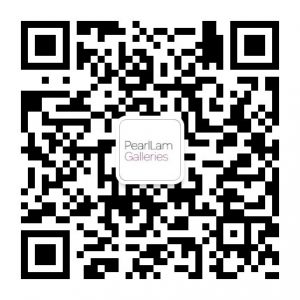Martin Szekely (B. 1952)
Martin Szekely was born in 1956, the son of Hungarian emigrants in France. He studied in Ecole Boulle and Ecole Estienne and graduated as a qualified printmaker. He was noticed for his talent in 1982, and since then he has had numerous collaborations with international brands such as Dom Pérignon, Hermès, Bernardaud, Legrand, Saint-Louis, E.N.S. (European Neurological Society), Terreal (Saint Gobain group), Heineken, JCDecaux etc. Currently he lives and works in Paris.
As a designer Szekely has two different focuses: designing furniture and objects for museums, private collectors and manufacturers, and working on major industrial projects. Szekely believes that objects aimed at the largest possible market – everyday objects that you barely notice – possess a ‘power’. In both branches of his work he has been on a 15-year quest to achieve a kind of creative purity – pure functionality. ‘My aim is to achieve an economy in the result that can’t even be defined as minimalist,’ he explains. ‘It’s something commonplace.’ His is the creation of the Perrier glass manufactured in 20 million copies. He is the father of many other iconic objects.
His style is characterized by looking for the simplest expression of the object also embracing its functionality. He is after products that could be understood by everyone and yet they are not demonstrative. His talent and personality have been recognised widely. He was awarded the Alfred Dunhill Price, for being ‘ a remarkable man of the year’. His creations are exhibited in MoMA and Centre Pompidou devoted an exhibition to him just last year.
Named “Designer of the Year” in 1987, Szekely was honored in 1999 with the title of Chevalier des Arts et des Lettres and the Alfred Dunhill “Remarkable Man of the Year” Prize. In 2003, he was named “Talent d’Or” at the Sommet du Luxe et de la Création in Paris. Pieces by Martin Szekely belong to the permanent collections of the world’s major museums, including the Centre Georges Pompidou and Musée des Arts Décoratifs in Paris, the Cooper Hewitt Museum in New York and the Israel Museum in Jerusalem. Szekely, who enjoys rethinking the concept of each object, has a special talent for working with imposing industrial constraints. Very careful to respect technical specifications, he works with materials as diverse as carbon fiber, crystal, Corian®, silver, resin and wood. Among his many industrial projects are the new generation of “Pilotime” decoders for Canal+/Canal Satellite (2004), the mini-beer glass “Baby” for Heineken (2004), the “Love Seat” movie seats for two for MK2 cinemas (2003), a full line of street furniture for JC Decaux (1995), the symbol pendant (2000) and “Reine de Saba” silver and gold jewelry line (1996) for Hermès, a tile for Saint-Gobain (2001), electrical appliance lines for Legrand (2000), a line of champagne buckets and service objects for Dom Pérignon (2000), a high-tension electrical pylon in glued, laminated timber for Transel and EDF (1995), and the famous Perrier glass (1996), the first of its kind (over 10 million manufactured). Martin Szekely Collections for Christofle: – Reflet: Haute Orfèvrerie collection for the table (2001) – Ténéré: a line of stainless-steel and Christofle Silver flatware (2004) – Radius: a collection of silver objects for the home (2007).



